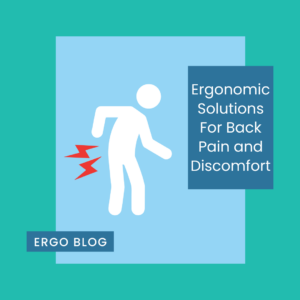Updated: Jun 12, 2023
Are Curved Monitors Better Than Flat Monitors?
Finding the right solution for your workspace comes with quite a few questions. Such as which office chair and is a standing desk necessary? Another item to consider is the monitor. Curved monitors were first introduced in 2014. The use of curved monitors is on the rise. Global shipments rose to 15.6 million in 2021 in comparison to 10.4 million in 2019. The curved monitor or curved display was introduced to compensate for the image distortion of a flat monitor. There are some studies that suggest curved monitors may provide greater benefits than flat monitors, especially to reduce visual fatigue and eye strain.
Benefits of Curved Monitors
When considering scientific studies, a single curved monitor is often compared to a single flat panel monitor. In these cases, a curved monitor offers a significant benefit by decreasing visual fatigue and eye strain. This is accomplished by allowing all parts of the screen to be in the user’s field of view and all focal points to be at about the same distance from the person’s eyes. In comparison, when looking at a flat screen, the edges of the monitor may not be viewed as clearly. Some users have to strain or allow their eyes to work harder to see the image toward the outer edges of the screen.
Other studies have found that curved monitors can also improve productivity. This is noted because the user appears to be able to navigate more effectively with the use of a mouse and read at a faster rate when compared to a single, flat monitor.
Recommendations
In one study, the preferred radius of curvature is about 500 to 600 mm, depending on the task. When reviewing research studies, it appears that additional research is needed to determine the best size and curvature for a general population.
Another question that came up pertains to two flat monitors that are set at an angle compared to one curved monitor. Are two flat monitors better than one curved monitor? In this case, it was found that the curved monitor performed better than the two flat monitors set at an angle. When viewing two flat monitors and viewing both at equal amounts of time (each one is used 50% of the day), the monitors should be angled at 30 degrees. The inside edges of the two monitors should be touching to avoid additional neck rotations to the left and right. For more information on monitor set-up, please read [Monitoring the Situation: How to Improve your Monitor Set-up]
Drawbacks of Curved Monitors
If you find yourself using two flat monitors and you use one as a primary monitor and one as a secondary monitor, a curved monitor may not be for you. When using curved monitors the person always has to be positioned directly in front of the monitor otherwise the image becomes skewed. If you would happen to look more to the left as the primary side of the screen, this could cause an awkward posture and repetitive motion.
Another item to consider is glare. When using a curved monitor, it may be more difficult to control the glare from windows and other areas within your workstation. Glare can cause eye strain as well.
The size of a curved monitor is rather large compared to a flat monitor. On average, a curved monitor has a 21:9 aspect ratio, and a flat monitor usually has a 16:9 aspect ratio. This means that the curved monitor is significantly wider than a flat monitor.
There are a few more cons to curved monitors. Another item to consider is the cost of a curved monitor is greater than a flat monitor. Curved monitors are also heavier and tend to be slower performing for gaming and streaming.
Check out our YouTube video below for a visual representation of the blog!
Apr 22, 2024
Apr 15, 2024
Apr 9, 2024



